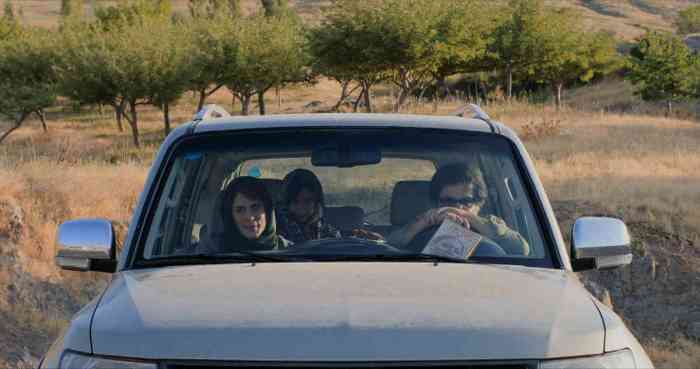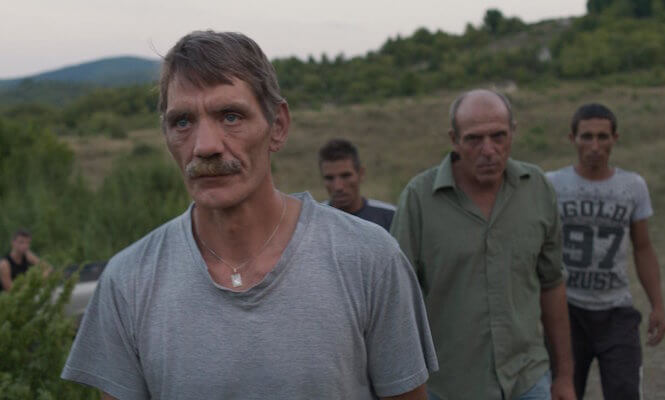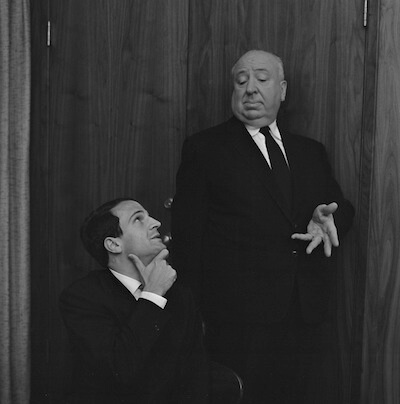Jack O’Connell in Yann Demange’s “’71.” | FILM SOCIETY OF LINCOLN CENTER
BY STEVE ERICKSON | Now in its 52nd year, the New York Film Festival faces a delicate balancing act between its role as a source for premieres of Hollywood’s Oscar-bound prestige films –– this year, that includes David Fincher’s “Gone Girl” and Paul Thomas Anderson’s “Inherent Vice,” both respectable choices judging from their directors –– and as a showcase for filmmakers like Pedro Costa, Hong Sang-soo, and Lisandro Alonso, who’ve never found much of an audience in the US and have had trouble even getting distribution here.
The main slate features 31 films, but the documentary and avant-garde sidebars double that. Perhaps wisely, “Projections,” formerly called “Views From the Avant-Garde,” has been halved; while it was great to see the festival devote so much space to non-narrative work, cramming 25 programs into a few days didn’t really work in practice. Titles of LGBT interest include Abel Ferrara’s “Pasolini” (Oct. 2, 6 p.m., Alice Tully Hall; Oct 3, 9 p.m., Howard Gilman Theater), Bertrand Bonello’s “Saint Laurent” (Sep. 30, 8:30 p.m., Alice Tully Hall; Oct. 2, 8:30 p.m., Walter Reade Theater), and out gay Argentine director Matias Piñeiro’s “The Princess of France” (Oct. 5, noon, Walter Reade Theater; Oct. 6, 6 p.m., Francesca Beale Theater).
The festival closes with Alejandro G. Iñarritu’s “Birdman.” We shall see if it reverses the aesthetic death spiral in which the director has been struggling since his strong debut, “Amores Perros.”
Among prestige films, directors little-known here, S&M drumsticks, the Troubles revisited & Godard lives
Miles Teller and J.K. Simmons in Damien Chazelle’s “Whiplash.” | FILM CENTER OF LINCOLN CENTER
Damien Chazelle’s “Whiplash” summons its inspiration for a dynamite finish, but it suffers from an overbearing sense of machismo that crosses over from character to film. Nineteen-year-old Andrew (Miles Teller) is an aspiring jazz drummer who studies at a New York music academy. One day, he gets the chance to work with the dictatorial Terence Fletcher (J.K. Simmons.) Their relationship quickly turns into emotional –– and, occasionally, borderline physical –– S&M. Chazelle’s sensibility draws on the profane, slur-laden dialogue of David Mamet and Quentin Tarantino. To say that Simmons’ performance is over-the-top would be putting it mildly; he evokes memories of his role as a neo-Nazi leader in the HBO prison drama “Oz.”
While I doubt Chazelle approves of everything Fletcher says, the film is also extremely white and male. Andrew’s girlfriend barely appears as a presence in it before he dumps her –– though his treatment of her doesn’t exactly flatter him –– and the many African-American musicians in the cast get no lines to speak. Despite these flaws, the film eventually manages to present Andrew and Fletcher as equals in an odd sort of gameplay. In its perversely thrilling finale, they match musical wits –– the equivalent of a spaghetti Western gundown, played out with a drum kit rather than guns. (Sep. 28, 9 p.m. & Sep. 29, 6 p.m., Alice Tully Hall)
Yann Demange’s “‘71” is a flawed film that’s still powerful in unexpected ways. It puts its worst foot forward, opening in the middle of a boxing match depicted in vertigo-inducing shakycam and quick cutting. The film’s biggest weakness is the extent to which Demange’s direction borrows from Paul Greengrass, although “‘71” is generally more sedate than its first scene. Additionally, the plot is basically lifted from Carol Reed’s classic “Odd Man Out.”
Sent to Belfast in 1971, a British soldier (Jack O’Connell) is injured and very quickly gets in over his head. A number of locals help him, but he’s carted from danger to danger. What’s novel about this film is its physicality. CGI has made cinematic bloodshed increasingly antiseptic, but Demange restores grit and dirt to it. The soldier becomes objectified –– not sexually, despite O’Connell’s youth and good looks –– and turned into a body leaking from numerous wounds, as well as a thing to be exchanged.
The film also has a fine ear for sound design, from the deafening racket created by women banging garbage can lids on the ground to protest the soldiers’ presence to the murky drones that accompany the aftermath of a pub bombing. It may be set 43 years ago and inspired by an even earlier movie, but the depiction of imperial arrogance wandering into another culture’s sectarian warfare couldn’t be more current. (Sep. 27, 6 p.m., Alice Tully Hall; Sep. 28, 6 p.m., Walter Reade Theater)
Director Jean-Luc Godard on the set of “Goodbye to Language.” | FILM SOCIETY OF LINCOLN CENTER
The importance of Swiss-French director Jean-Luc Godard’s work from 1959’s “Breathless” to 1967’s “Weekend” is rarely questioned by serious film critics and cinephiles, even if the films themselves aren’t to everyone’s taste. After “Weekend,” that consensus splinters. Films like “Goodbye To Language,” as good as they are, help explain why. It’s a nearly plotless collection of literary, philosophical, and cinematic references (“Frankenstein” looms large), political rumination, and abstract video experimentation, starring the director’s dog Roxy (as well as several human actors, who take their clothes off frequently).
It will take more than one viewing to unpack its deeper meanings –– fortunately, it’s opening at the IFC Center and returning to Lincoln Center on October 29 –– but even at a first glance, it’s apparent how inventive Godard’s use of 3D and color are. Generally, 3D sci-fi and animation don’t push the boundaries of the medium, remaining tied to some kind of naturalist aesthetic. Godard went wild with the possibilities of 3D and video technology to distort nature, not to depict the world as it is. (The list of cameras he used is included in the end credits.) Even if it amounts to nothing more than a collection of cool image textures (and I think there’s a lot more going on), “Goodbye to Language” would still be one of the year’s best films.(Sep. 27 & Oct. 1, 9 p.m., Walter Reade Theater)
52ND NEW YORK FILM FESTIVAL | Sep. 26-Oct. 12 | Lincoln Center: Various venues | filmlinc.com































